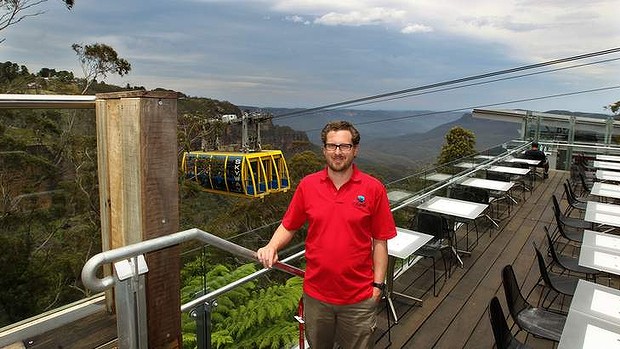Kim Arlington, Charmaine Wong -Sydney Morning Herald

“We knew people were depending on money we pay them to survive”: David Hammon.
Photo: Sahlan Hayes
The Blue Mountains economy is expected to take a $71 million hit from the October bushfires, even though its tourist attractions were untouched by fire.
Summer is usually a peak time for mountains tourism as visitors escape the heat, take in the scenery and tackle outdoor adventures. But visitor numbers plummeted after the fires and are yet to recover, with operators saying domestic tourists in particular seemed unaware that only a relatively small area had been affected.
“The fires were nowhere near the tourism destinations of the Blue Mountains,” Blue Mountains Economic Enterprise chairman Donald Luscombe said. ”None of the attractions were affected, yet people have stayed away. Many of the people who lost their homes work in the tourism industry and they need to get back to work.”
A report by the organisation found the region’s economic output was expected to drop by up to $71.3 million as a result of lost tourism in the six weeks after the fires. Blue Mountains, Lithgow and Oberon Tourism estimates the tourist and hospitality industry lost $47.4 million.
After the fires burnt areas in Springwood, Winmalee, Yellow Rock and Mount Victoria, the state government pledged almost $230,000 to encourage tourists to return.
An app, bluemountainsconnect .com, was launched to help recovery.
The managing director of Scenic World in Katoomba, David Hammon, said saturation media coverage of the fires ”really fixed in people’s minds that the mountains were a) all burnt or b) a dangerous place to go”.
The family-owned scenic skyway, cableway and railway, had 31,560 fewer visitors after the fires than in the same period last year.
”We couldn’t roster people on and we knew people were depending on the money we pay them to survive,” Mr Hammon said.
”If they then can’t pay their rent or their mortgage, that causes a whole secondary round of stress to run through the community.”